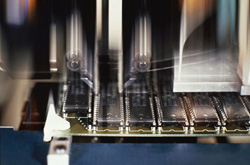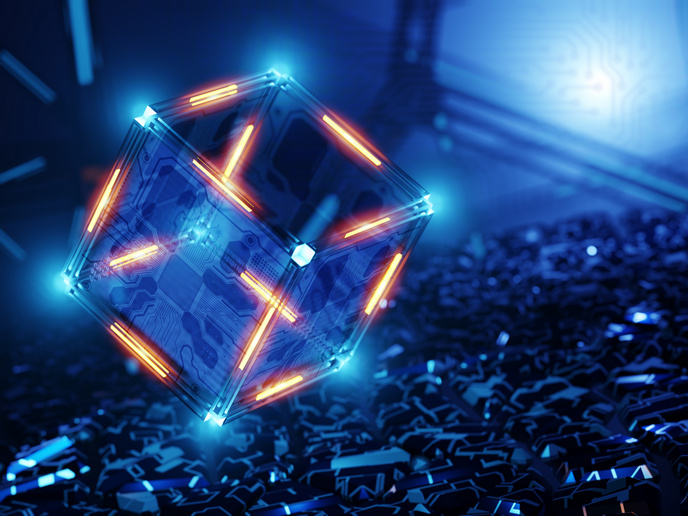Ant behaviour inspires robots
As such the path formation behaviour of s-bots has a lot in common with that of ants with a slight difference; the means of travelling. While ants excrete pheromones deposited on these pathways, s-bots create visual paths. Despite their limited visual capabilities s-bots can perceive coloured objects at a maximum distance of 40cm. S-bots can build a path connecting the object to the target location and this path works a guide for other s-bots or a swarm-bot. Following this pathway, they can find their way to the object and then back to the target location. The procedure starts when a blue object representing the target location is identified by s-bots that explore its surrounding area in a random way. At the maximum distance from the target location, they stop and beacon to form the visual path. The visual path can be significantly extended by the random search of other s-bots. Although the visual path forms in a random direction and the object retrieval is totally not assured, provision has been made that incomplete visual paths can be restarted until they become completed. Compared to conventional map-like representational approaches, this procedure is based on local information and it is simpler. Extensive experiments were run with two probabilistic control parameters on the exploration strategies. Modification of these parameters of the s-bots controller displayed a variety of exploration strategies. Change of the explorer timeout control specific parameter offered different shapes of the formed chains and speeds of the chain formation process. It was observed that the shorter the explorer timeout, the faster formation of many chains and the longer explorer timeout, the slower formation of fewer chains. Other testing investigated the effectiveness of different strategies concerning their capacity to adapt to the environmental characteristics. The time required for chain building depends on the complexity of the environment, such as presence of obstacles. The developed controllers were successfully employed in the s-bots that showed an increased potential for object finding and chain-building.







